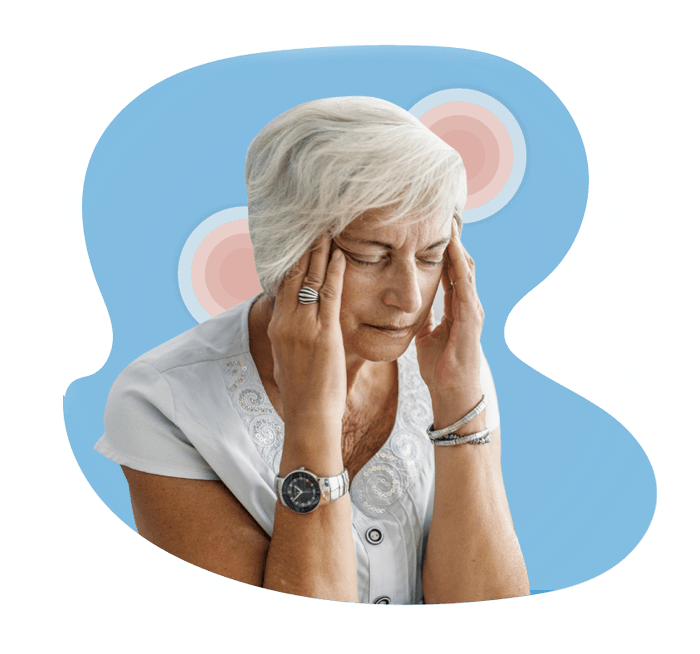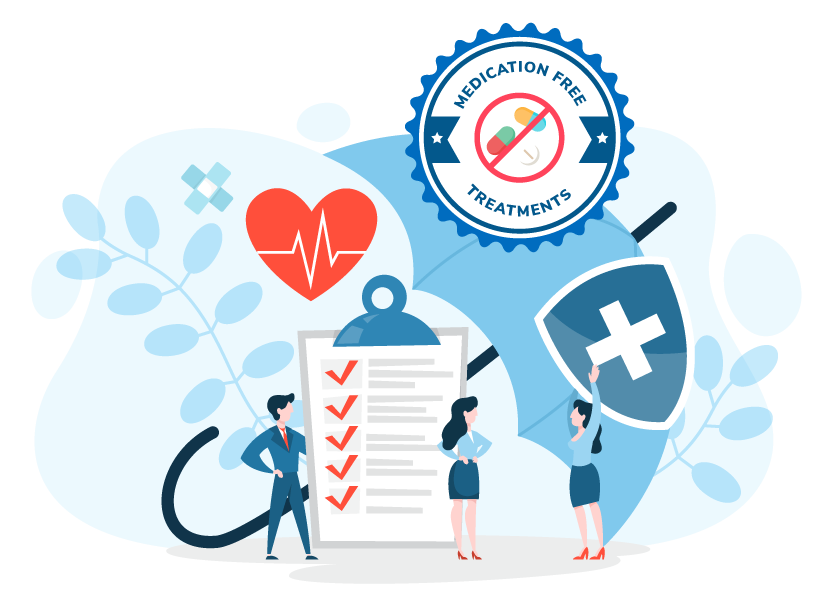Episodic Cluster Headache
Episodic Cluster Headaches account for up to 80% of all Cluster Headache cases, making it the most common type of Cluster Headache. Episodic symptoms are when patients experience bouts of “cluster periods” that can last for weeks or months. They can occur seasonally or at set times each year. This is normally followed by an extended pain free period of remission that can last for months or even years.
Chronic Cluster Headache
Chronic Cluster Headaches occur without a prolonged period of remission and account for roughly 20% of cluster headaches. Sufferers will often have “cluster periods” that will last over a year. Some sufferers may experience headache-free days however, remission periods generally last less than one month.
What Are The Risk Factors for Cluster Headaches
– Men are 3-4 times more likely to experience cluster headaches
– Patients are generally heavy smokers
– High alcohol consumption may trigger cluster headaches
– Cluster Headaches most commonly affect people aged 20-50
– Patients with family members who are sufferers may be at a higher risk
What causes Cluster Headaches?
As with many forms of headache, the cause of cluster headache was previously unknown. Medical professionals have been prescribing medications such as Triptans, which have been effective at relieving the pain, if taken early enough to ‘catch’ the headache. The effect of Triptans, as most doctors originally thought, was that it predominantly works on migraines as it helps prevent dilatation of the blood vessels in the head to stop migraines.
However, recent studies have shown that dilatation and expansion of the blood vessels are no different to those suffering from a migraine and those who are migraine-free. More importantly, the physiology of blood vessels in the head during a cluster headache do not expand, yet patients still benefit from medications such as Triptans.
This has led researchers to reconsider the mechanisms behind how Triptans work in the context of cluster headaches. Emerging insights suggest their benefit may be linked to their effect on serotonin within the central nervous system. Serotonin plays a role in how the brain processes pain, particularly in areas like the brainstem, which is thought to be closely involved in cluster headache generation. By enhancing serotonin activity, Triptans may help regulate increased sensitivity in these regions, potentially reducing both the intensity and duration of headache episodes. This evolving understanding suggests that Triptans may act primarily through neurological pathways rather than by altering vascular tone.
Common Treatment Strategies for Cluster Headaches
Conventional Approaches
Managing and treating cluster headaches often involves a combination of acute treatments to relieve pain during an attack and preventive therapies aimed at reducing the frequency and severity of future episodes.
Acute Treatments
- Oxygen Therapy: Inhaling 100% oxygen through a non-rebreather mask at a flow rate of 12–15 litres per minute for 15–20 minutes can provide rapid relief during an attack. Approximately 70% of patients experience improvement within 15 minutes.
- Triptans: Medications such as sumatriptan, administered subcutaneously or intranasally, are commonly used to treat acute cluster headache attacks. Subcutaneous administration provides faster relief for many patients.
Preventive Treatments
- Verapamil: A calcium channel blocker often prescribed to reduce the frequency of cluster headaches. Improvement may be seen within 1.7 weeks for episodic cluster headache and 5 weeks for chronic cluster headache at doses between 160 and 720 mg daily.
- Corticosteroids: Short-term use of steroids like prednisone can help reduce the occurrence of cluster periods but is generally avoided long-term due to potential adverse effects.
- Occipital Nerve Blocks: Injecting anaesthetics or steroids near the occipital nerve can provide temporary relief, particularly for patients who do not respond well to other preventive options.
Neuromodulation and Surgical Considerations
For patients with chronic cluster headaches unresponsive to conventional treatment, neuromodulation techniques may be considered:
- Occipital Nerve Stimulation (ONS): This procedure involves stimulating the occipital nerves with implanted electrodes to reduce headache intensity and frequency. ONS has shown potential in providing relief for some patients with refractory cluster headaches.
- Deep Brain Stimulation (DBS): In severe cases, DBS targets specific brain regions involved in pain processing. While still considered a last-resort option, DBS has demonstrated significant reductions in headache frequency and severity in select patients with chronic cluster headaches.
Considerations
While these treatments may offer relief, some come with risks, side effects, or limited long-term effectiveness. It’s important to work with experienced healthcare professionals to develop a personalised treatment plan that balances immediate symptom relief with long-term management.
At Sydney Headache and Migraine Clinic™, our approach focuses on identifying and addressing the root cause of cluster headaches – aiming for effective, medication-free results through evidence-based, non-invasive techniques.







